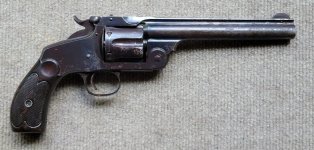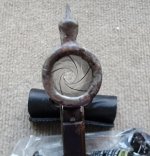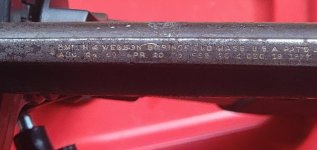I'm seeking a high-quality restoration specialist for my No3 New Model SA "Frontier .44-40. I happened across this gun in the early 1970s at an estate sale. The finish was perfect, but the cylinder rotated with the hammer down. There is no half cock, but when fully cock, the cylinder locks are properly in position. It proved quite accurate with some light black powder loads.
When I investigated, I found it was one of the remaining 1286 .44-40s after the Japanese contract. Originally I thought it was "a neat old gun" for a shadow box
The serial number is 166 marked on the butt and cylinder.
Unfortunately, in 2011, we had a house fire. The gun was not exposed to heat but was covered with debris and water for several days in the Texas heat and was pitted. Given the rarity, I think it would be worthwhile to see if it could be restored. I would appreciate any thoughts on the matter and any referrals you think would be appropriate. Thanks, Randy
When I investigated, I found it was one of the remaining 1286 .44-40s after the Japanese contract. Originally I thought it was "a neat old gun" for a shadow box
The serial number is 166 marked on the butt and cylinder.
Unfortunately, in 2011, we had a house fire. The gun was not exposed to heat but was covered with debris and water for several days in the Texas heat and was pitted. Given the rarity, I think it would be worthwhile to see if it could be restored. I would appreciate any thoughts on the matter and any referrals you think would be appropriate. Thanks, Randy





